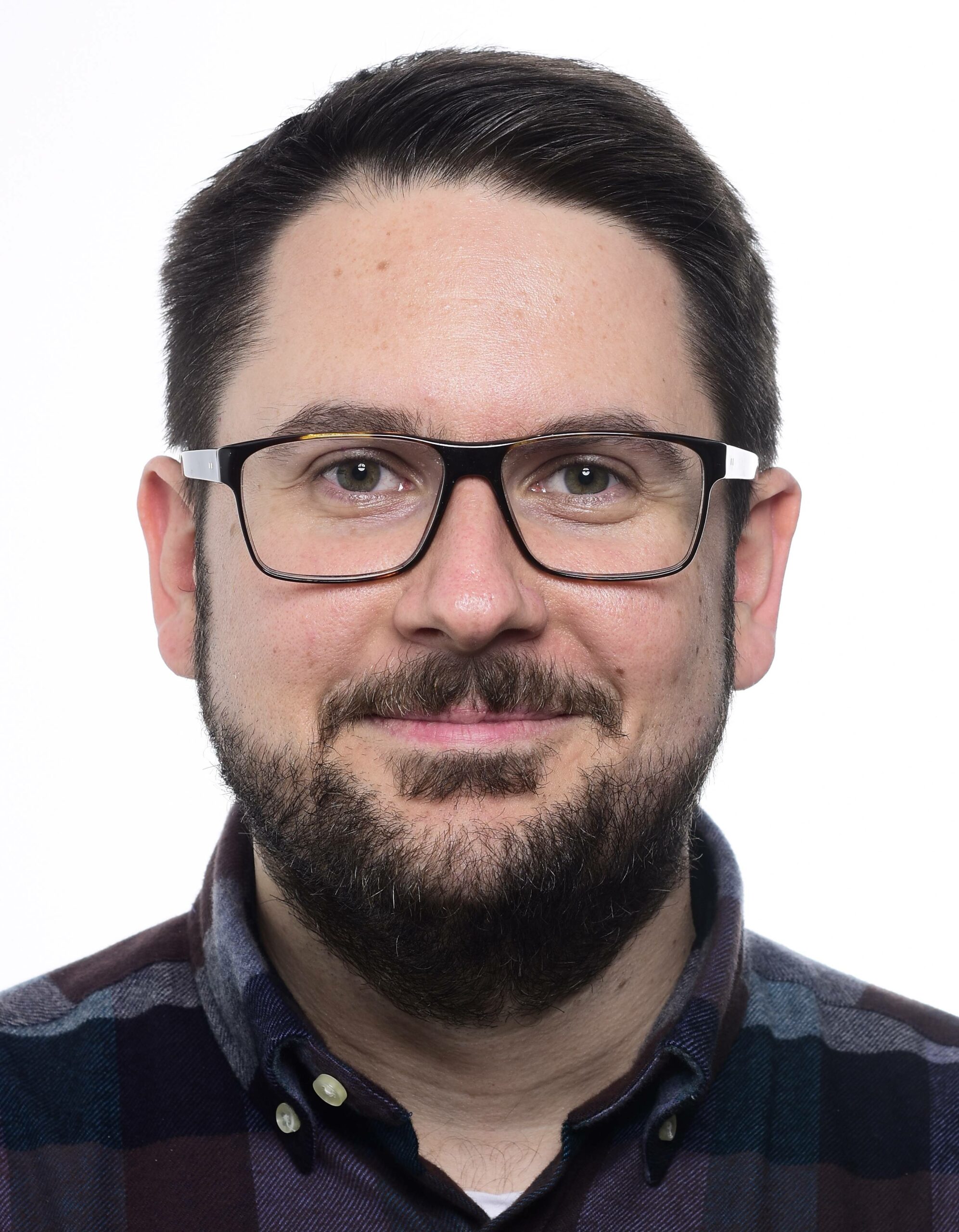
Florian Mayer
Post Doc
Florian is a Postdoc in the group and has experience in research with many different Archaea for over 15 years. He is fascinated by archaeal cell division and how molecules are shuttled across membranes within an archaeal system or to other microorganisms.
At MRC Laboratory of Molecular Biology, he investigates the different cell division systems of the archaeal host-symbiont system Ignicoccus hospitalis and Nanoarchaeum equitans. Both archaea, isolated from hydrothermal sediments, grow at 90°C with a hydrogen-based sulphur reduction to gain energy. The host Ignicoccus hospitalis has an unusual two-membrane cell architecture, and the attached N. equitans cells, with only 400 nm in diameter, are one of the smallest Archaea in the world.
Florian obtained his PhD from the Goethe University Frankfurt, Germany, in 2014 and worked as a visiting scientist at the Max-Planck-Institute for Biophysics. During this period, he gained much knowledge in membrane protein biology, mass spectrometry, and structural biology. He revealed new ways of energy conservation in Archaea and characterized in detail the Nanomotor of the archaeal ATP synthase.
After obtaining his PhD, he joined the industry for six years, developing Archaea-based, biotechnological processes for the big energy revolution and was fascinated by the molecular basis of how electrons are shuttled into microorganisms to reduce CO2. Coming back to Academia, Florian worked at the Archaea Centre in Regensburg, Germany, to develop a genetic system for I. hospitalis and to investigate DNA methylation in different Archaea, followed by a Postdoc position at the Royal Netherlands Institute for Sea Research (NIOZ) on the Island of Texel (NL). There, he started his work to address cell division in different Archaea, which is now continued at the MRC Laboratory of Molecular Biology, Cambridge (UK) using Super-Resolution Microscopy techniques.
At MRC Laboratory of Molecular Biology, he investigates the different cell division systems of the archaeal host-symbiont system Ignicoccus hospitalis and Nanoarchaeum equitans. Both archaea, isolated from hydrothermal sediments, grow at 90°C with a hydrogen-based sulphur reduction to gain energy. The host Ignicoccus hospitalis has an unusual two-membrane cell architecture, and the attached N. equitans cells, with only 400 nm in diameter, are one of the smallest Archaea in the world.
Florian obtained his PhD from the Goethe University Frankfurt, Germany, in 2014 and worked as a visiting scientist at the Max-Planck-Institute for Biophysics. During this period, he gained much knowledge in membrane protein biology, mass spectrometry, and structural biology. He revealed new ways of energy conservation in Archaea and characterized in detail the Nanomotor of the archaeal ATP synthase.
After obtaining his PhD, he joined the industry for six years, developing Archaea-based, biotechnological processes for the big energy revolution and was fascinated by the molecular basis of how electrons are shuttled into microorganisms to reduce CO2. Coming back to Academia, Florian worked at the Archaea Centre in Regensburg, Germany, to develop a genetic system for I. hospitalis and to investigate DNA methylation in different Archaea, followed by a Postdoc position at the Royal Netherlands Institute for Sea Research (NIOZ) on the Island of Texel (NL). There, he started his work to address cell division in different Archaea, which is now continued at the MRC Laboratory of Molecular Biology, Cambridge (UK) using Super-Resolution Microscopy techniques.